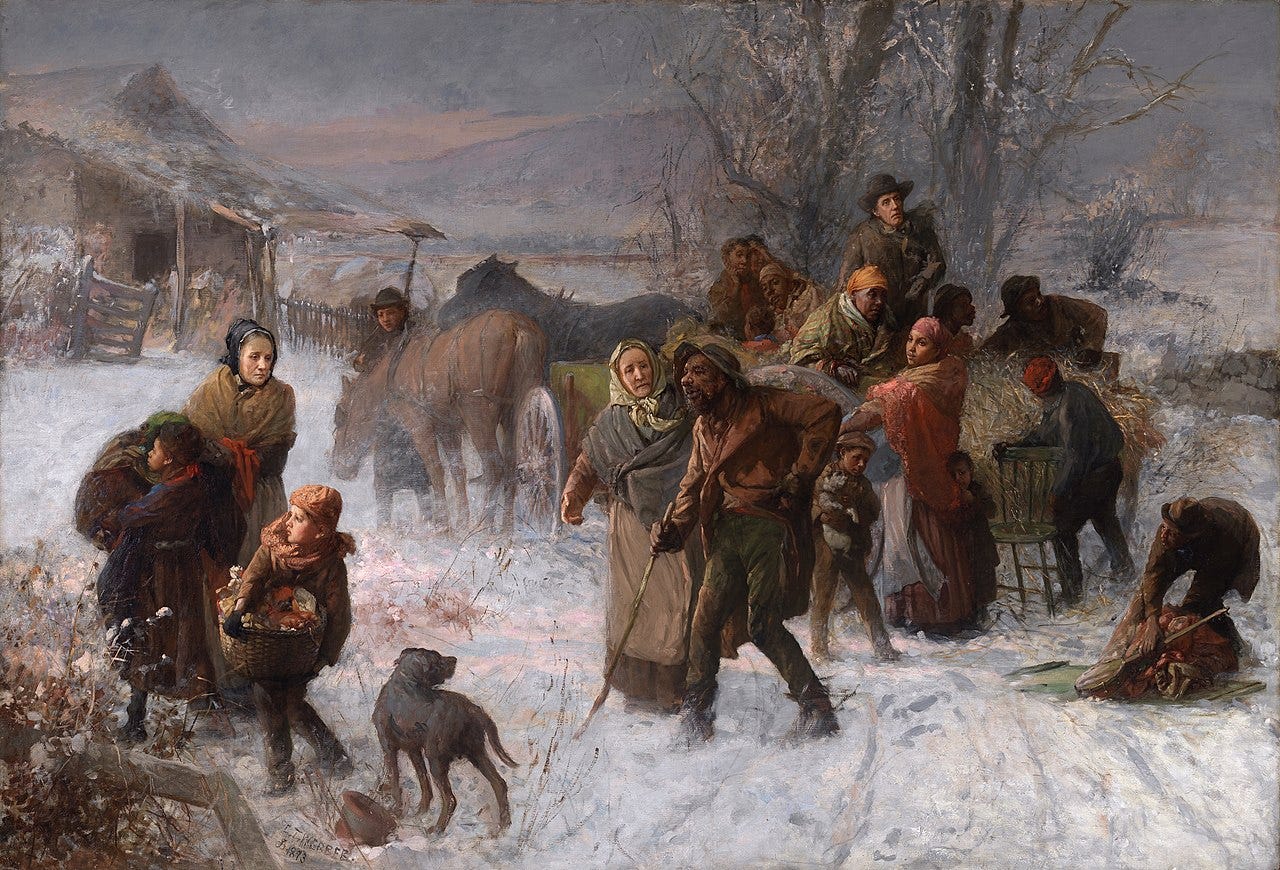Would you risk your life and family to help escaping slaves?
In 1852, Mahlon Haworth built a house in Indianola, Iowa, with a concealed trapdoor to a basement chamber and tunnels for a quick getaway. This was a stop on the Underground Railroad, a clandestine network of aid for African American slaves escaping out of the slave states north to Canada and freedom. The railroad included guides or conductors, safehouses called stations, and station masters who hid and supplied them. Haworth’s neighbor, Benjamin Hinshaw was also a station master, and his sons were Conductors. These families faced stiff fines and prison sentences for helping runaway slaves, and the rough posses pursuing them could search suspected safehouses, ransacking homes and farms without warrants, and arresting African Americans without a care for identity.
But Haworth, a Quaker, said the house helped him ‘carry out his beliefs’, he knew slavery was wrong, and he did what he could to help fight it. He built his house so that every protection was available with a hidden trap door with a ladder to a secret underground room and an escape tunnel beyond that. The room was clean and whitewashed, with chairs and beds where the fugitives would rest by day, safe for a few hours. Haworth’s safehouse never yielded a capture to raiders.
In addition to the Quakers, Congregationalists and Methodists were inclined to sympathize with the slave’s cause and joined in the operation of the Underground Railroad, exposing their homes and families to the nighttime raids and the abusive slave catchers, but carrying on, nonetheless. One writer in the 1920s likened them to the bootleggers of their own time.
One day Haworth’s neighbor Henshaw was hiding a group of escapees when a posse of slave hunters got wind of it and came demanding that he hand them over to the law. The Quaker denied knowledge of the runaway slaves and went about his work. The house and farm were searched, every place a human might hide was torn apart, but the slaves were not found. After the raiders departed, Henshaw scooped seed corn from three barrels and helped three people out. They had risked suffocation to escape.
At night the Hinshaws would take them north toward the Des Moines River, where they were ferried across by a man named Boston Taylor, who passed them along to the next conductor at the next station on their path to Canada and freedom. This activity intensified over time, and by the time the Civil War broke out, it is thought there were over 100 stops in Iowa alone funneling a steady stream of humanity away from one of the worst crimes in history.
I recently saw a video by an accomplished African American genealogist who commented that white people like John Brown didn’t lead the slaves to freedom, the black people organized and helped each other to freedom. No doubt the African Americans did organize, and indisputably they carried the far greater risk, but a social movement like the massive evacuation that was the Underground Railroad takes a coalition to effect, and without the white helpers, the system wouldn’t have been possible.
I learned from Mr. Rogers about looking for the ‘Helpers’ in any challenging situation, and while they were only a part of the network, I respect that the Underground Railroad ran through these Helpers’ homes.
May I have the courage to do what’s right when it is my turn to step up.
Haworth was my distant cousin, did the Underground Railroad run through YOUR family tree?
NOTE: There will be an Iowa Underground Railroad Bike Ride in September of 2024! This is a super cool project that almost makes me want to take up cycling. Website under construction as of 1/30/24, but Check it out at: https://www.iowaundergroundrailroadride.com/
Learn More
Underground Railroad at the State Historical Society of Iowa website, including a LIST OF KNOWN PARTICIPANTS in the Iowa Underground Railroad! https://history.iowa.gov/history/research/collections/featured-topics/underground-railroad-iowa
The Iowa Freedom Trail, a driving tour that follows the path taken by abolitionist John Brown on his last trip across Iowa. What a great way to spend a weekend! https://iowaculture.medium.com/freedom-trail-62afa1c94b83
The Underground Railroad, a PBS video re-enactment of escaped slaves making their way north on the Underground Railroad
https://www.iowapbs.org/iowapathways/artifacts?field_art_media_type_value=All&combine=underground
Some maps of the Underground Railroad in Iowa: https://sites.rootsweb.com/~ialqm/IowaURmap.html
A cool map of the Underground Railroad across the United States from National Geographic: https://education.nationalgeographic.org/resource/undergroundrailroad/
Grandfather Was An Underground Railroad Station Agent, Family Sleuther Blog: https://www.familysleuther.com/2017/02/grandfather-was-underground-railroad.html






That is an inspiring story, Annie. It is interesting that the white "helpers" get the most attention, it seems, but I agree that it took both white and black helpers, working together, to be successful.
Margaret
Very interesting piece. Thanks!